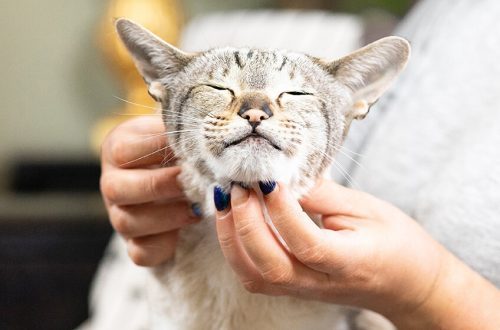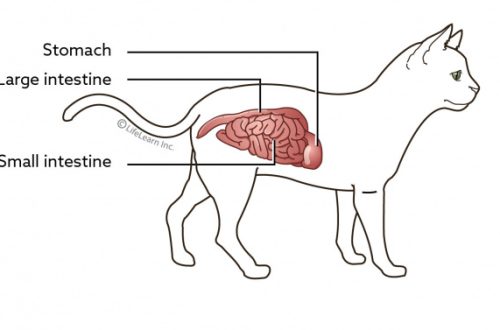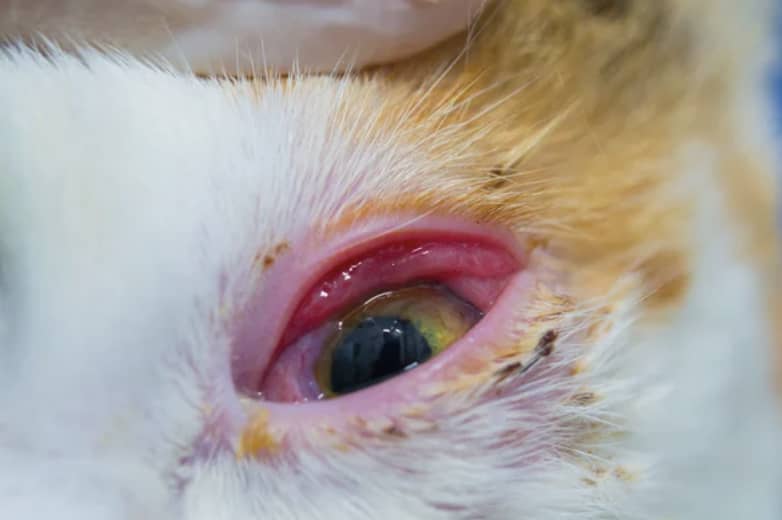
Chlamydia in cats
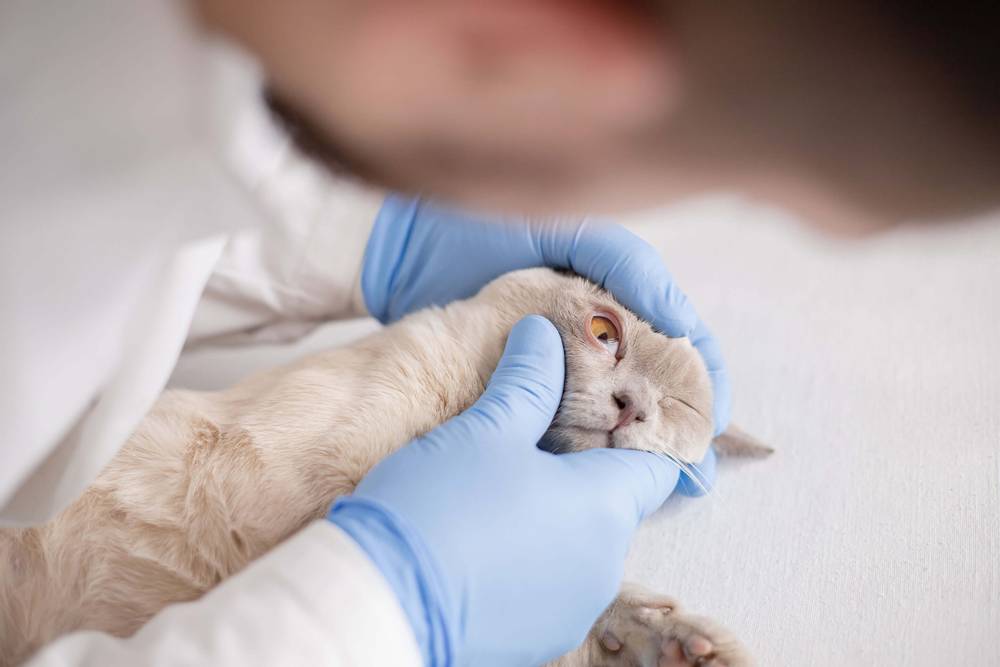
Contents
- Features of chlamydia in cats: the main thing
- How does a cat become infected with chlamydia?
- Forms of chlamydia
- Symptoms of chlamydia in cats
- Diagnosis of chlamydia
- Features of the treatment of chlamydia in adult cats
- Features of the treatment of kittens
- Prevention of chlamydia in cats. Vaccination
- Is chlamydia dangerous to humans?
Features of chlamydia in cats: the main thing
Chlamydia in cats is a bacterial infection that resembles a virus in its properties;
Infection occurs by contact, airborne droplets and sexual contact;
The bacterium can infect the eyes, respiratory and reproductive systems;
Symptoms may vary, but the most common are discharge from the eyes, nose, sneezing, coughing, problems with gestation;
Laboratory methods are used to confirm the diagnosis;
Treatment includes symptomatic therapy and the use of antibiotics;
Dosages and duration of treatment for chlamydia in kittens can be very different from treatment in adult cats;
For prevention, contact with unvaccinated pets should be avoided and vaccination should be carried out in a timely manner;
Chlamydia in cats is not dangerous for humans, but it is still worth observing simple hygiene measures.
How does a cat become infected with chlamydia?
Infection occurs when meeting with an infected fellow. The disease is transmitted by airborne droplets, contact and sexual contact, and infection can also occur during the passage of the birth canal from a cat to a kitten.
Forms of chlamydia
Chlamydia can infect the mucous membranes of the eyes, upper respiratory tract, and genitals. There are ocular, respiratory and sexual manifestations of the disease.
Also, chlamydia can be an acute or chronic disease.
Symptoms of chlamydia in cats
Symptoms of chlamydia in cats and cats can vary depending on the location of the infection.
Eye damage will result in:
discharge from the eyes;
Redness, swelling of the eyelids and conjunctiva;
The cat may squint its eyes;
Formation around the eyes of a crust of white or brown.
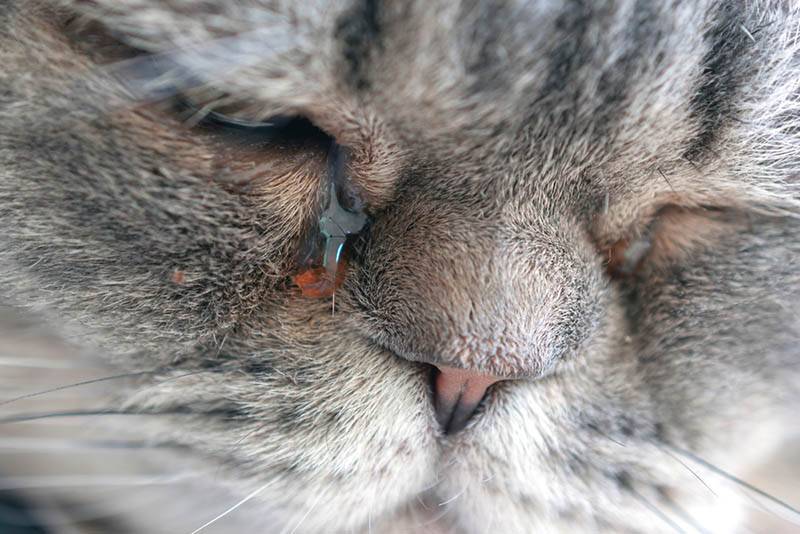
Often the ocular form is complicated by the respiratory form due to the penetration of bacteria through the nasolacrimal canal. In this case, the symptoms of rhinitis, rhinotracheitis are additionally added, in severe cases pneumonia may develop. The respiratory form manifests itself with the following symptoms:
Nose discharge;
Scabs around the nose;
Labored breathing;
sneezing;
Decreased appetite (often due to decreased sense of smell).
The symptoms listed above are often accompanied by:
Cough;
Fever;
Refusal to eat;
lethargy;
Dyspnea.
When the bacterium of the reproductive system is affected, the following symptoms may appear:
Discharge from the loop (vaginitis, endometritis, pyometra);
miscarriages;
non-viable offspring;
Balanoposthitis.
Diagnosis of chlamydia
Several methods are used for diagnosis.
Specific diagnostics is aimed at identifying a microorganism or traces of its presence. For the study, swabs from the mucous membranes of the eyes, nose, pharynx, and vagina are used. For severe respiratory symptoms, a bronchoalveolar lavage test may be taken from the lungs. The resulting material will be sent to the laboratory for analysis by one of the following methods:
PCR;
ELISA;
Bacterial seeding.
Non-specific diagnostics may additionally include:
Clinical blood test;
X-ray (when coughing);
Ultrasound (with signs of pathology of the reproductive system).
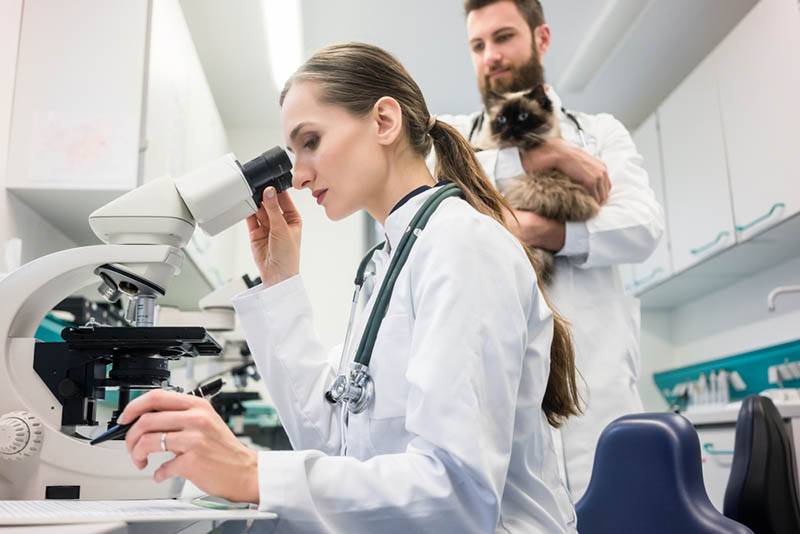
Features of the treatment of chlamydia in adult cats
Cats older than 5 years rarely get chlamydia, but the infection can accompany other diseases, such as mycoplasmosis, herpes virus, immunodeficiency.
For the treatment of chlamydia in cats, symptomatic therapy is used – drops in the eyes, antipyretics, inhalations, expectorants, and others. Specific treatment is prescribed after the diagnosis is made. As a rule, antibiotics acting on gram-negative microflora are used. But some of them are contraindicated for kittens under 1 year old, so the treatment should be supervised by a veterinarian.
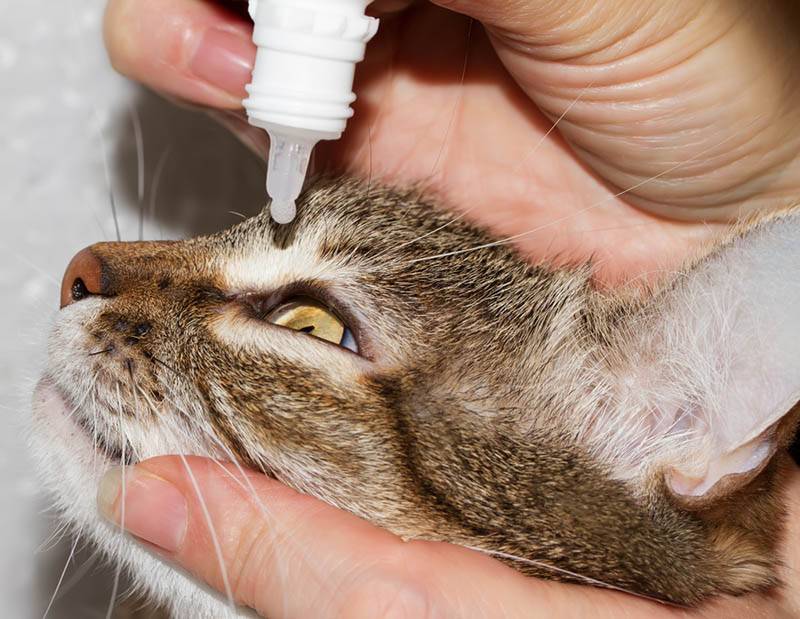
Features of the treatment of kittens
Most often, cats from 2 months to 5 years old suffer from chlamydia, there are cases of infection of newborn kittens by the mother during childbirth or when feeding offspring. In the case of kittens under 2 months of age, the treatment must be chosen especially carefully. These babies have weakened immunity, many drugs are dosed differently than in adult cats, and some drugs are contraindicated at all.
Prevention of chlamydia in cats. Vaccination
At the moment there are several types of vaccines against chlamydia in cats. Vaccinations should be done at least once a year. If the pet has access to the street or is kept together with a large number of other cats, then vaccination should be given special attention, because the risk of infection in such cats is higher.
In addition to vaccination, special attention should be paid to the general health of the pet (diet, timely treatment for parasites).
Is chlamydia dangerous to humans?
Chlamydia in cats is not dangerous to humans. Although there are cases of sluggish conjunctivitis in people in contact with infected cats. As a rule, the disease is mild and does not cause complications. However, you should pay attention to personal hygiene: wash your hands after contact with a pet, do not kiss him on the face.
Of course, immunocompromised people have a higher risk of infection.
18 May 2021
Updated: 21 May 2022



